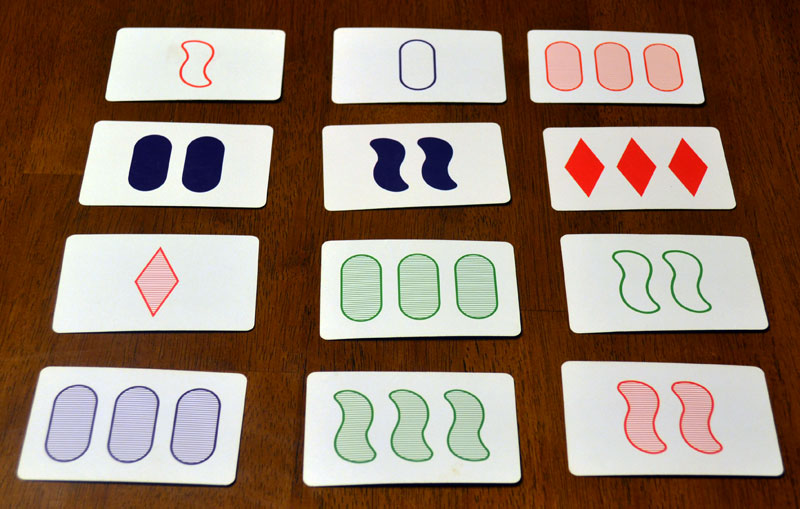
Over the past week or so, I’ve spent too much time on my phone playing Threes (review by Ars Technica here). The game has you drag around little numbered tiles to combine ones and twos to make threes, and then threes with each other to make sixes, sixes for twelves, etc. (the biggest card I’ve built, before running out of space, is 384). And after some time futzing around with it, I’ll confess to looking up at my friends and thinking, “Those two are roommates, so they’re a matched pair, and I could drag them together and collapse them.”
I love the game in the same way I love Set or topology (where you get to compare shapes like a donut and a coffee cup, and rule them identical, since if you had one made out of clay, you could deform it to become the other without tearing new holes or closing up old ones). I like finding patterns and using it to make connections between disparate objects.
And that’s one reason I like ritual prayer. If you imagine me as a very long list of variable, describing everything about me — my age, where I am in time and space, etc, and I settle down to pray Morning Office, the little variable called isPrayingLiturgyoftheHours gets set to 1. So, no matter how many other ways I differ from any other person, if they’re praying the Morning Office, too, we match on that one bit.
If you go back to just the normal (x,y,z) coordinates that give our position in space, I can look along a line of everyone who shares the same x-coordinate, and they’re all matched across that one dimension. In fact, I only need two dimensions at that point to distinguish any one of them from the others, because they’re all united along the x-line.
This is a roundabout way of saying that today I’m starting the St Louis de Montfort prayers for consecration to Christ through Mary. It’s like a very long novena, with daily prayers for thirty three days, culminating on the Feast of the Annunciation, which means it will also serve as a bridge from Ordinary Time into Lent for me. I’m using the app that Marc Barnes recommended in order to look up each day’s prayers.
I made this decision a little on the spur of the moment, when I saw a Facebook friend mention she was doing this set of prayers, but I like that I’ll be joined to people, some of whom I know, some of whom I don’t, all going through this series of prayers and meditations together. These Catholic practices are also small-c catholic — universal, and open to everyone.
I like devotions to Mary for exactly this reason. Whatever other differences there are between us, everyone has the spiritualChildofMary variable set to one. So, no matter how distant I feel from someone, or how angry or confused I am, I can try and reach through Mary, along that connection, to feel some kind of kinship. The way that St. Louis de Monfort’s prayers are linked to the calendar means that there’s one bonus homology between me and everyone else who is following this consecration. Are any Catholic commenters interested in joining in?












